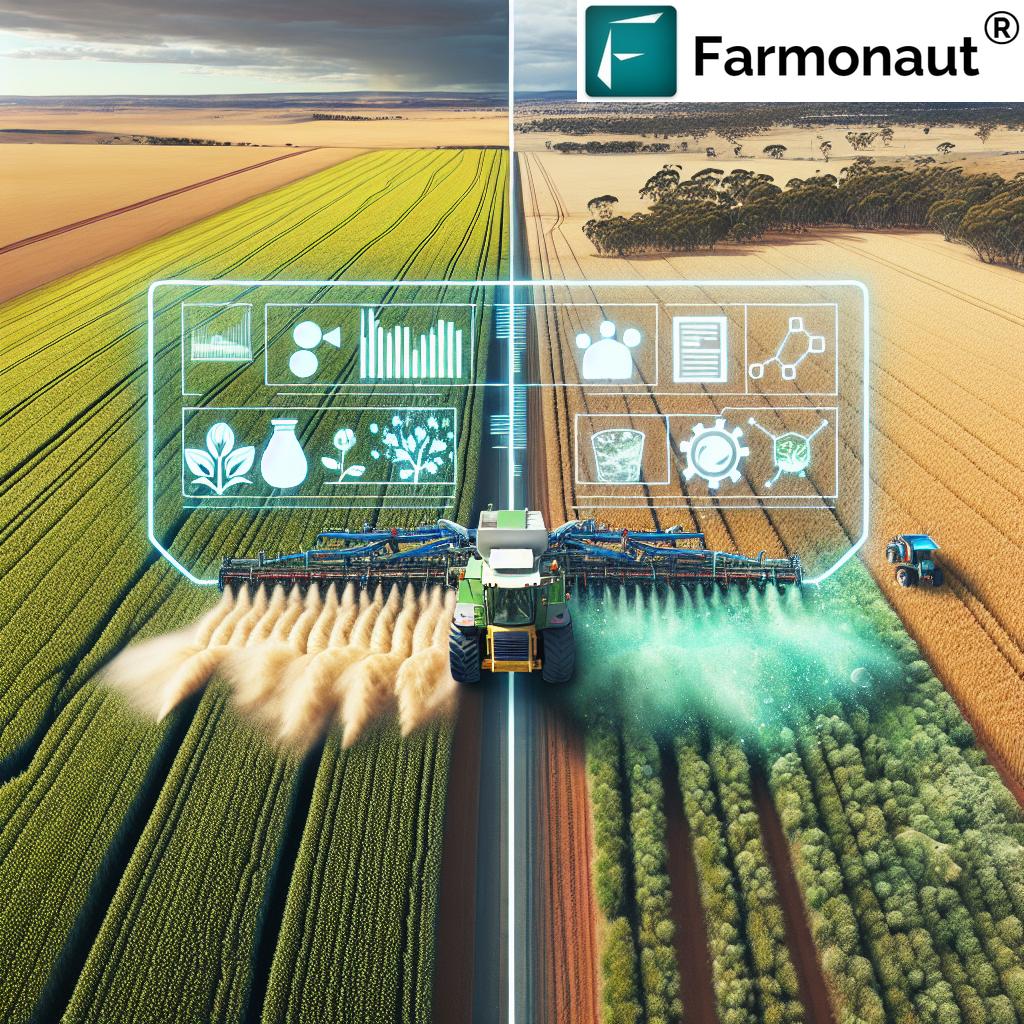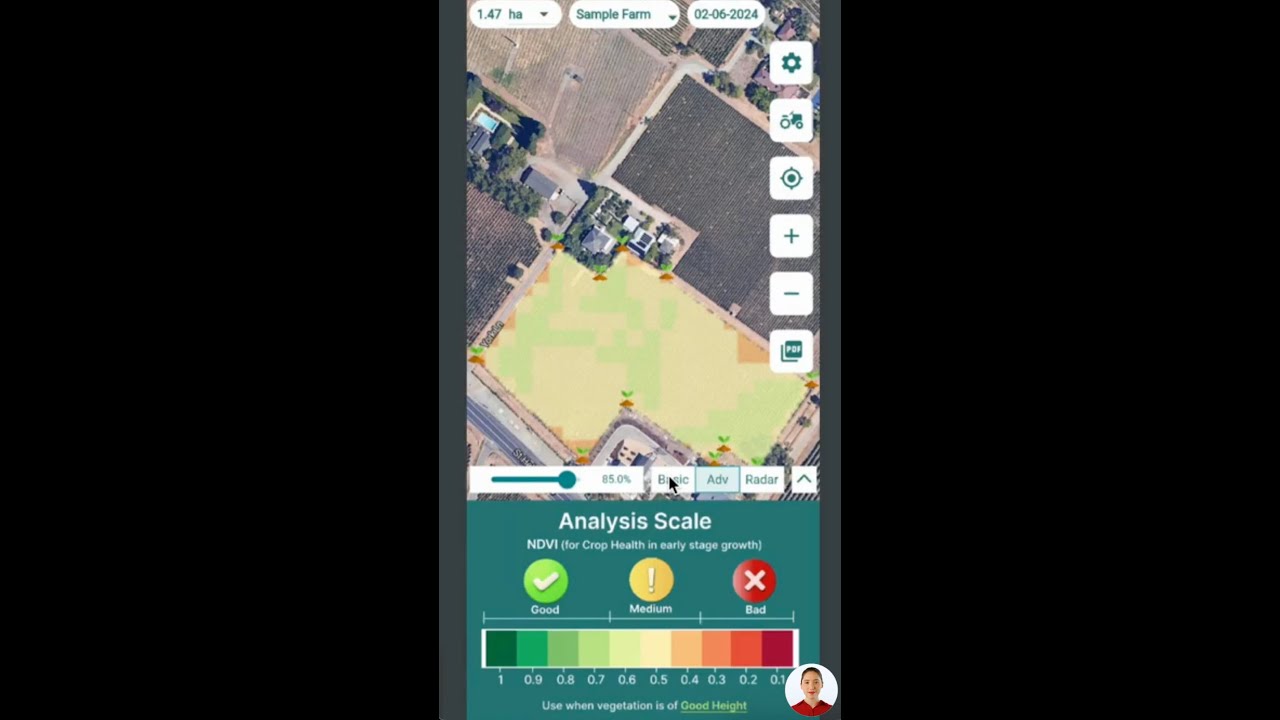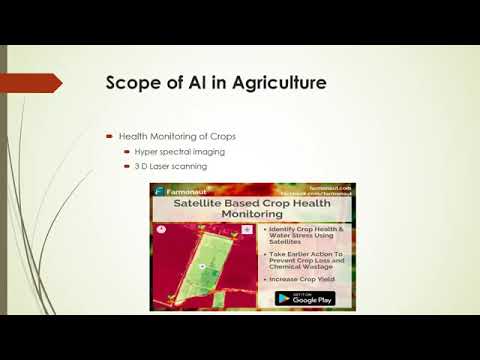Glyphosate Safety in Modern Australian Farming: Science-Based Facts for Sustainable Agriculture

“Glyphosate, used in over 160 countries, has undergone over 800 scientific studies assessing its safety and environmental impact.”
In the ever-evolving landscape of modern Australian farming, the topic of glyphosate safety in agriculture remains at the forefront of scientific debate and public discourse. As we navigate the complexities of sustainable crop protection and environmental stewardship, it’s crucial to examine the science behind this widely used herbicide. In this comprehensive exploration, we’ll delve into the facts, address common misconceptions, and shed light on how glyphosate fits into the broader context of sustainable farming practices in Australia and beyond.
Understanding Glyphosate: The Science and Its Role in Modern Farming
Glyphosate, a broad-spectrum herbicide, has been a cornerstone of modern farming practices since its introduction in the 1970s. Its primary function is to inhibit an enzyme essential for plant growth, effectively controlling a wide range of weeds that compete with crops for nutrients, water, and sunlight. As we examine glyphosate safety in agriculture, it’s important to understand its mechanism of action and why it has become such a crucial tool for farmers worldwide.
- Mode of Action: Glyphosate targets the EPSPS enzyme, which is present in plants but not in humans or animals.
- Efficacy: It’s effective against both annual and perennial weeds, making it versatile for various farming systems.
- Soil Interaction: Unlike some herbicides, glyphosate binds tightly to soil particles, reducing the risk of leaching into groundwater.
The widespread adoption of glyphosate in Australian agriculture has contributed significantly to the evolution of farming practices, enabling conservation tillage and no-till farming methods. These approaches have proven beneficial for soil health, reducing erosion and preserving soil moisture – critical factors in Australia’s often harsh and dry climate.
Scientific Evidence on Herbicides: Separating Fact from Fiction
When discussing glyphosate safety in agriculture, it’s essential to rely on rigorous scientific evidence rather than anecdotal claims or sensationalized reports. Numerous independent studies and regulatory assessments have been conducted globally to evaluate the safety of glyphosate for human health and the environment.
Key findings from reputable scientific bodies include:
- The World Health Organization (WHO) and the Food and Agriculture Organization (FAO) Joint Meeting on Pesticide Residues concluded that glyphosate is unlikely to pose a carcinogenic risk to humans from exposure through diet.
- The European Food Safety Authority (EFSA) has stated that glyphosate is unlikely to pose a carcinogenic hazard to humans.
- The Australian Pesticides and Veterinary Medicines Authority (APVMA) has found no grounds to place glyphosate under formal reconsideration based on current scientific evidence.
These assessments are based on extensive toxicological studies, epidemiological research, and real-world data on glyphosate use. However, it’s important to note that scientific inquiry is ongoing, and new studies continue to contribute to our understanding of glyphosate’s long-term effects.
Modern Farming Practices and Glyphosate Use
The integration of glyphosate into modern farming practices has revolutionized agricultural production, particularly in Australia. Let’s explore how this herbicide fits into contemporary agricultural systems:
- Conservation Agriculture: Glyphosate enables minimal tillage practices, which help preserve soil structure and reduce carbon emissions from machinery.
- Crop Rotations: It facilitates more efficient crop rotations by providing effective weed control between different crop cycles.
- Precision Agriculture: Advanced technologies, such as those offered by Farmonaut, allow for targeted application of glyphosate, minimizing overall use and environmental impact.
The adoption of these practices has not only improved farm productivity but also contributed to more sustainable agricultural systems. By reducing soil disturbance and improving water retention, glyphosate-enabled farming methods have played a role in mitigating some of the environmental challenges faced by Australian agriculture.
Sustainable Crop Protection: Balancing Efficacy and Environmental Care
As we strive for sustainable crop protection, the role of glyphosate must be considered within a broader integrated pest management (IPM) approach. This holistic strategy combines chemical, biological, and cultural methods to manage weeds and pests effectively while minimizing environmental impact.
“Regulatory bodies in over 100 nations have concluded that glyphosate, when used as directed, poses no unreasonable risks to human health.”
Key aspects of sustainable crop protection involving glyphosate include:
- Targeted Application: Using precision agriculture tools to apply herbicides only where needed.
- Resistance Management: Rotating herbicides and using diverse weed control methods to prevent resistance development.
- Buffer Zones: Establishing untreated areas near water bodies to protect aquatic ecosystems.
- Cover Cropping: Integrating cover crops to suppress weeds naturally and reduce herbicide dependence.
Explore Farmonaut’s API for advanced agricultural insights
By incorporating these practices, farmers can maximize the benefits of glyphosate while minimizing potential environmental risks. This balanced approach is crucial for maintaining the long-term viability of Australian agriculture in the face of climate change and increasing global food demand.
Agricultural Chemical Regulations: Ensuring Safety and Efficacy
The use of glyphosate, like all agricultural chemicals in Australia, is subject to strict regulatory oversight. The Australian Pesticides and Veterinary Medicines Authority (APVMA) is responsible for assessing and registering agricultural and veterinary chemical products, including glyphosate-based herbicides.
Key aspects of agricultural chemical regulation in Australia include:
- Rigorous Safety Assessments: Products must undergo extensive testing before approval.
- Ongoing Monitoring: Continuous evaluation of new scientific evidence and global regulatory decisions.
- Label Requirements: Strict guidelines for product use, including safety precautions and application rates.
- Residue Monitoring: Regular testing of food products to ensure compliance with maximum residue limits.
These regulatory safeguards are designed to protect human health, the environment, and trade while ensuring that farmers have access to effective crop protection tools. The APVMA’s science-based approach to regulation aligns with international best practices and contributes to the global reputation of Australian agricultural products.
Environmental Impact of Herbicides: A Closer Look at Glyphosate
Understanding the environmental impact of glyphosate is crucial for assessing its role in sustainable agriculture. While all herbicides have some level of environmental interaction, glyphosate’s properties make it unique in several ways:
- Soil Binding: Glyphosate strongly adheres to soil particles, reducing the risk of leaching into groundwater.
- Biodegradation: It breaks down relatively quickly in the environment, with a half-life typically ranging from a few days to a few months, depending on soil conditions.
- Non-Target Organisms: When used as directed, glyphosate has minimal impact on non-plant organisms due to its specific mode of action.
- Water Ecosystems: While it can be toxic to aquatic plants, proper application techniques minimize the risk to water bodies.
Access Farmonaut’s API Developer Docs for integration guidance
Despite these generally favorable characteristics, responsible use remains paramount. Farmers and agricultural professionals must adhere to best practices to minimize any potential negative impacts on the environment:
- Buffer Zones: Maintaining untreated areas near water sources.
- Weather Considerations: Avoiding application during windy conditions or before rain to prevent drift and runoff.
- Integrated Weed Management: Using glyphosate as part of a diverse weed control strategy to reduce overall herbicide use.
By implementing these practices, we can harness the benefits of glyphosate while safeguarding our precious ecosystems.
Food Safety and Pesticides: Addressing Consumer Concerns
As consumers become increasingly conscious of food safety, questions about pesticide residues, including glyphosate, have come to the forefront. It’s crucial to address these concerns with transparent, science-based information:
- Maximum Residue Limits (MRLs): Strict limits are set for glyphosate residues in food, with regular monitoring to ensure compliance.
- Risk Assessments: Comprehensive evaluations consider realistic exposure scenarios and incorporate large safety margins.
- Dietary Exposure: Studies consistently show that dietary exposure to glyphosate residues is well below levels of concern for human health.
- Washing Produce: Simple practices like washing fruits and vegetables can further reduce any potential residues.
It’s important to note that the presence of residues does not necessarily indicate a health risk. Regulatory bodies worldwide, including in Australia, set MRLs at levels far below those that could pose any health concerns, even with long-term consumption.
Agricultural Innovation and Technology: Enhancing Glyphosate Use Efficiency
The future of glyphosate use in agriculture is being shaped by technological advancements that promote more precise and efficient application. These innovations not only improve the effectiveness of weed control but also contribute to reducing overall herbicide use:
- Precision Spraying: GPS-guided systems and drone technology enable targeted application, reducing waste and environmental impact.
- Variable Rate Application: Adjusting herbicide rates based on weed density and soil characteristics optimizes usage.
- Weed Mapping: Advanced imaging and AI technologies help identify weed species and distribution for more strategic control measures.
- Resistant Crop Varieties: Development of crops with enhanced glyphosate tolerance allows for more flexible weed management strategies.
Companies like Farmonaut are at the forefront of this agricultural technology revolution, providing farmers with tools to make data-driven decisions about herbicide application and overall crop management. By leveraging satellite imagery and AI-powered insights, these platforms enable more sustainable and efficient use of agricultural inputs, including glyphosate.
Glyphosate Toxicity Research: Current Findings and Ongoing Studies
The safety profile of glyphosate continues to be a subject of extensive scientific research. While the majority of studies support its safety when used as directed, ongoing research helps refine our understanding and informs regulatory decisions:
- Long-Term Studies: Continuous monitoring of populations with occupational exposure to glyphosate.
- Ecological Impact: Research on the effects of glyphosate on soil microorganisms and biodiversity.
- Formulation Studies: Investigations into the toxicity of complete herbicide formulations, not just the active ingredient.
- Biomonitoring: Assessments of glyphosate presence in human and animal tissues to understand real-world exposure levels.
It’s important to note that while some studies have suggested potential concerns, the weight of scientific evidence continues to support the safety of glyphosate when used according to label instructions. Regulatory bodies worldwide regularly review new research to ensure that safety assessments remain up-to-date and protective of human health and the environment.
Climate Change and Crop Management: The Role of Herbicides
As climate change poses new challenges to agriculture, the role of herbicides like glyphosate in crop management is evolving. Consider these key points:
- Drought Resistance: Conservation tillage enabled by glyphosate use helps retain soil moisture, crucial in drought-prone regions.
- Carbon Sequestration: Reduced tillage practices contribute to increased soil organic matter and carbon storage.
- Weed Pattern Changes: Shifting climate zones may alter weed distributions, requiring adaptive management strategies.
- Crop Resilience: Effective weed control supports stronger, more resilient crops that can better withstand climate stresses.
As we face the challenges of climate change, integrated weed management strategies that include judicious use of herbicides like glyphosate, combined with innovative farming practices, will be crucial for maintaining food security and environmental sustainability.
Comparative Analysis: Glyphosate in Different Agricultural Systems
To better understand the role of glyphosate in modern farming, let’s compare its use across different agricultural practices:
| Agricultural Practice | Glyphosate Usage | Environmental Impact | Crop Yield Impact | Food Safety Rating | Sustainability Score | Regulatory Compliance |
|---|---|---|---|---|---|---|
| Conventional Farming | High | Medium | +15-20% | 4/5 | 7/10 | Yes |
| Organic Farming | None | Low | -10-15% | 5/5 | 8/10 | Yes |
| Integrated Pest Management | Moderate | Low | +10-15% | 4.5/5 | 9/10 | Yes |
| No-Till Farming | High | Low-Medium | +5-10% | 4/5 | 8/10 | Yes |
| Precision Agriculture | Moderate | Low | +15-25% | 4.5/5 | 9.5/10 | Yes |
This comparison illustrates that while glyphosate use varies across different farming systems, its integration into modern agricultural practices can contribute to improved yields and sustainability when used responsibly and in compliance with regulations.
Future Innovations in Herbicide Technology and Use
As we look to the future of sustainable agriculture, several promising innovations are on the horizon that could further improve the efficiency and safety of herbicide use, including glyphosate:
- Nanotechnology: Development of nanoformulations for more targeted and efficient herbicide delivery.
- Bioherbicides: Research into naturally derived compounds that could complement or replace synthetic herbicides.
- Gene Editing: Advancements in CRISPR technology may lead to crops with enhanced weed suppression abilities.
- AI-Driven Weed Management: Machine learning algorithms to optimize herbicide application based on real-time field conditions.
- Robotic Weed Control: Autonomous machines capable of identifying and selectively treating weeds, reducing overall herbicide use.
These innovations hold the potential to further refine our approach to weed management, minimizing environmental impact while maintaining or improving agricultural productivity.
Conclusion: Embracing Science-Based Decision Making in Agriculture
As we navigate the complexities of modern farming in Australia and globally, it’s clear that glyphosate safety in agriculture remains a topic of significant importance. The scientific evidence overwhelmingly supports the safety and efficacy of glyphosate when used according to label instructions and as part of an integrated weed management strategy.
However, responsible stewardship of this valuable tool is crucial. By embracing precision agriculture technologies, following best practices, and staying informed about the latest research, farmers can maximize the benefits of glyphosate while minimizing potential risks to human health and the environment.
As we face the challenges of climate change and increasing global food demand, science-based decision-making will be more important than ever. By leveraging innovative technologies, like those offered by Farmonaut, and adhering to rigorous safety standards, we can continue to build a sustainable and productive agricultural sector that meets the needs of both present and future generations.
Let’s commit to ongoing dialogue, research, and collaboration to ensure that our farming practices evolve in harmony with scientific understanding and environmental stewardship. The future of agriculture depends on our ability to balance productivity with sustainability, and glyphosate, when used wisely, has a role to play in achieving this crucial balance.
FAQs About Glyphosate Safety in Agriculture
- Is glyphosate safe for human consumption?
Extensive scientific research and regulatory assessments have concluded that glyphosate, when used as directed, does not pose unreasonable risks to human health. Residues found in food are typically well below established safety limits. - How does glyphosate affect the environment?
Glyphosate binds tightly to soil and breaks down relatively quickly in the environment. When used properly, it has minimal impact on non-target organisms. However, responsible application practices are crucial to protect aquatic ecosystems. - Can organic farmers use glyphosate?
No, glyphosate is not permitted in certified organic farming. Organic farmers use alternative weed management strategies such as mechanical cultivation, crop rotation, and approved organic herbicides. - How does glyphosate contribute to sustainable agriculture?
Glyphosate enables conservation tillage practices, which help preserve soil structure, reduce erosion, and lower carbon emissions from farm machinery. It also supports efficient crop rotations and precision agriculture techniques. - Are there alternatives to glyphosate?
Yes, there are alternative herbicides and non-chemical weed control methods. However, glyphosate’s broad-spectrum effectiveness and relatively low environmental impact make it a preferred choice for many farming situations. Integrated weed management strategies often combine various approaches for optimal results.




















